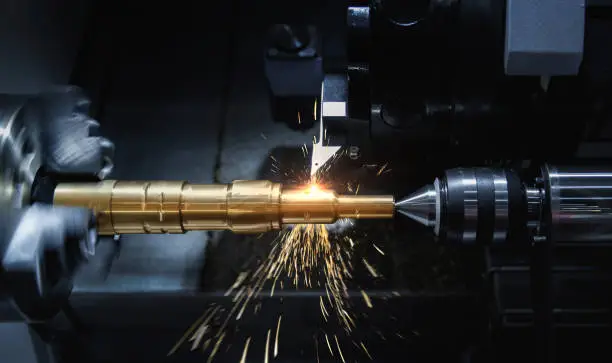As factories everywhere chase better speed, smaller products, and lower costs, the spotlight on precision metal stamping keeps getting brighter. This process makes tiny, complex parts over and over with exacting repeatability, and now it must live up to tighter rules than ever. From the plane above your head to the car in your driveway and the device in your pocket, aerospace, auto, electronics, and medical markets are all pushing suppliers to upgrade dies, inspection programs, and raw materials.
Alongside this pressure grows another trend-high precision machining services that either backup stamping work, mesh with it, or, in some cases, swallow it whole. In the sections that follow, we break down how stamping is changing, the new tech fueling that change, and the key takeaways B2B buyers and vendors need to stay on the cutting edge.
The Evolution of Precision Metal Stamping in High-Tech Industries
Precision metal stamping takes sheet steel or another flat alloy, drops it into a die, and squeezes with a heavy press until it emerges in a ready-made form. Although the basic idea has been around for decades, the bar for what a stamped part can be-and what it must endure-has climbed fast.
Back in the day, stamping mostly turned out sturdy bits like brackets, housings, and frames that kept machines working. Now shops expect tiny, high-precision features and curvy shapes, and sometimes they pair stamping with high-precision machining services to tap, mill, or even EDM parts afterward.
Because it repeats fast, stays cheap, and delivers tight tolerances, precision stamping is slipping into the prototype line and the final-product stream across most B2B fields, especially when the order numbers hit the dozen-plus mark.
Tighter Specifications Are Reshaping Tooling Design
The first sign of progress shows up where engineers hammer out the tool design. Narrow tolerances and tricky shapes demand smarter dies, computer simulations, and a good read on how different steels and alloys will bend, stretch, or crack.
Fresh tooling ideas include:
- Carbide and powdered-metal inserts that shrug off wear and keep specs in line through long runs.
- Finite Element Analysis (FEA) models that track every grain of material to catch warping or cracking before it starts.
- Progressive dies that stamp, punch, and trim in one move, slashing the need for extra setups.
Taken together, these upgrades trim scrap and boost yield, a must in sectors where one micron can make or break a part.
Take this sentence: The close teamwork of fine metal stamping and top-level machining now lets shops build hybrid parts that hit the strict specs for planes and medical gear.
Advanced Materials Demand Innovation in Forming Techniques
Modern stamped parts come from more than plain stainless or soft aluminum. As demands rise, shops wrestle with titanium, beryllium-copper, and tough new steel grades every week.
Because these metals push limits, stamping faces fresh hurdles:
- Material Springback: Tough alloys bend hard, then bounce back, so teams must plan ahead or parts miss spec.
- Microcracking Risks: High-strength stock can shatter when pressed, mainly in small holes or fine corners.
- Surface Finish Requirements: Circuits and tight optics need gleaming, burr-free faces, not just sharp edges.
To solve the puzzle, many B2B shops now add high-precision machining after stamping, easing burrs, polishing microsurfaces, and cutting tiny details that cannot.
Integration of In-Die Sensing and Digital Quality Control
No customer waits for a final eye after the press. Today, real-time checks, instant alerts, and self-adjusting controls keep modern lines ahead of defects.
Standout digital tools include:
- In-die sensors that track force, alignment, and part presence the moment the press closes.
- Automated camera systems now scan every part while it moves down the line, spotting flaws in real time and cutting waste before it piles up.
- Feedback loops automatically tweak the tools as they wear or as incoming material shifts, keeping quality even when conditions change.
Such tech matters most in precision machining shops that can only accept perfect parts, so every piece gets a look and every readout calls for action.
Where firms mix stamping and machining, one shared digital record of inspections and alerts is now a must-have link in the manufacturing chain.
Hybrid Manufacturing: Combining Stamping with CNC Machining
Metal stamping by itself is rarely enough anymore. Builders today stitch stamping with machining, welding, laser cutting, or even small-scale 3D printing.
In tight-tolerance work:
- Stamping makes the main outline fast and cheap.
- CNC steps in to cut threads, pockets, or faces that need finer fits.
- After that, sparks from EDM or a quick coat of surface treatment polish the rest.
This mixed route opens the door to bolder designs, trims tool bills on shorter runs, and gets jobs out the door sooner. Its speed is vital when parts must be tested, failed, then tweaked almost overnight-a demand growing fast in B2B engineering circles.
Squeezing Value from Every Sheet
Today, being green and using every bit of material matter just as much to shops as cutting parts accurately. The good news is, precision metal stamping already runs lean, creating less scrap than many subtractive methods.
Three recent eco-focused upgrades prove this point:
- Near-net-shape dies that cut almost-final profiles and spare follow-on machining.
- Modular tooling which cuts die waste and gives builders more parts per set.
- Smart automation that saves power on each piece by running equipment only when needed.
Add in the boom of high-precision machining, and the whole line gets tighter. By fine-tuning geometry and chopping out extra steps, machining bundles up with stamping to push costs down and footprints smaller.
Conclusion
As B2B customers keep tightening rules on accuracy and material duty, precision metal stamping keeps pace. Fresh specs spark upgrades in tooling, digital inspections, and even hybrid setups, turning stamping from a legacy move into a front-line, adaptable link in advanced manufacturing.
When shops pair precision stamping with high-end machining, they stay quick, competitive, and ready for tomorrow’s toughest jobs.


